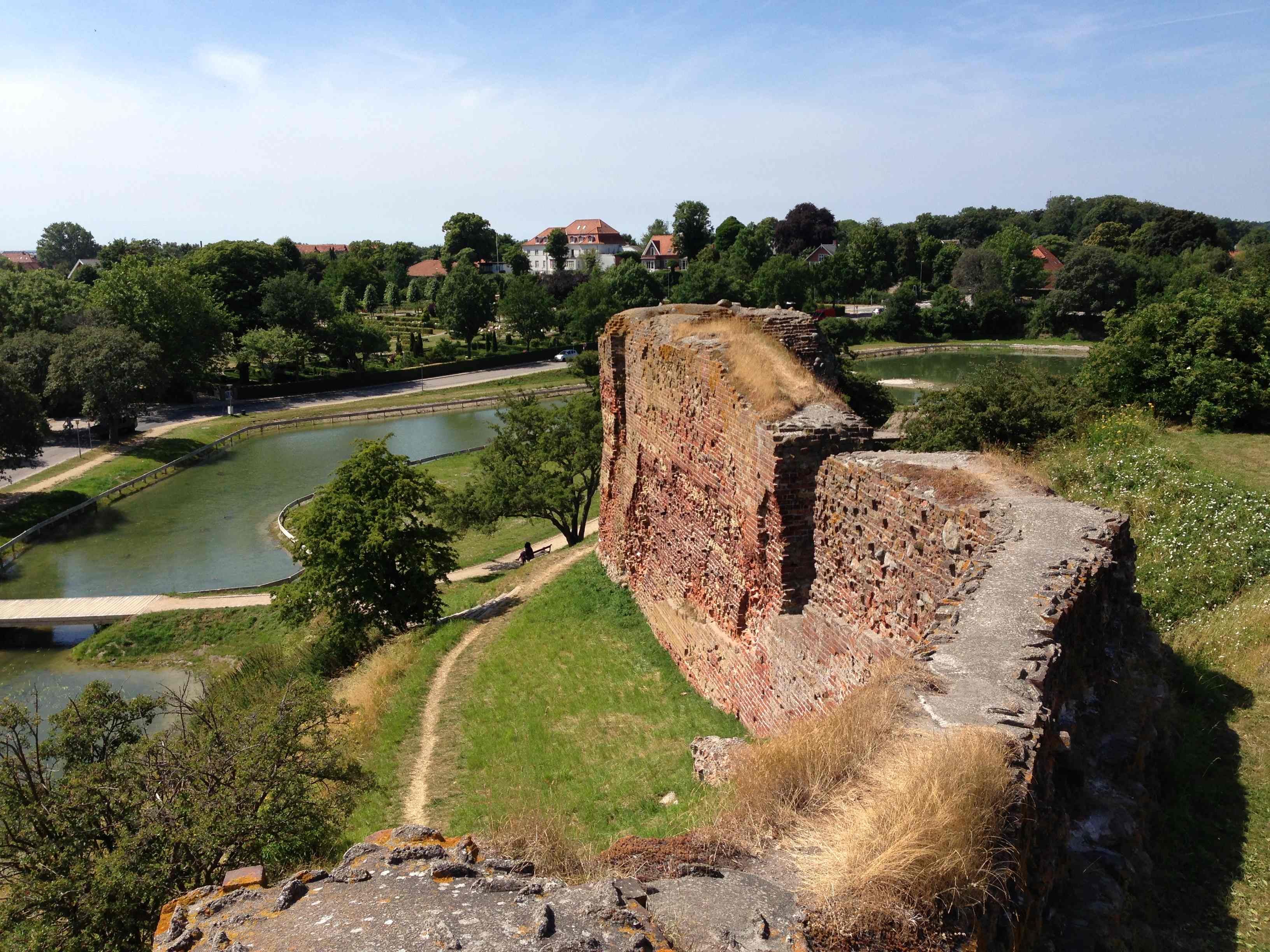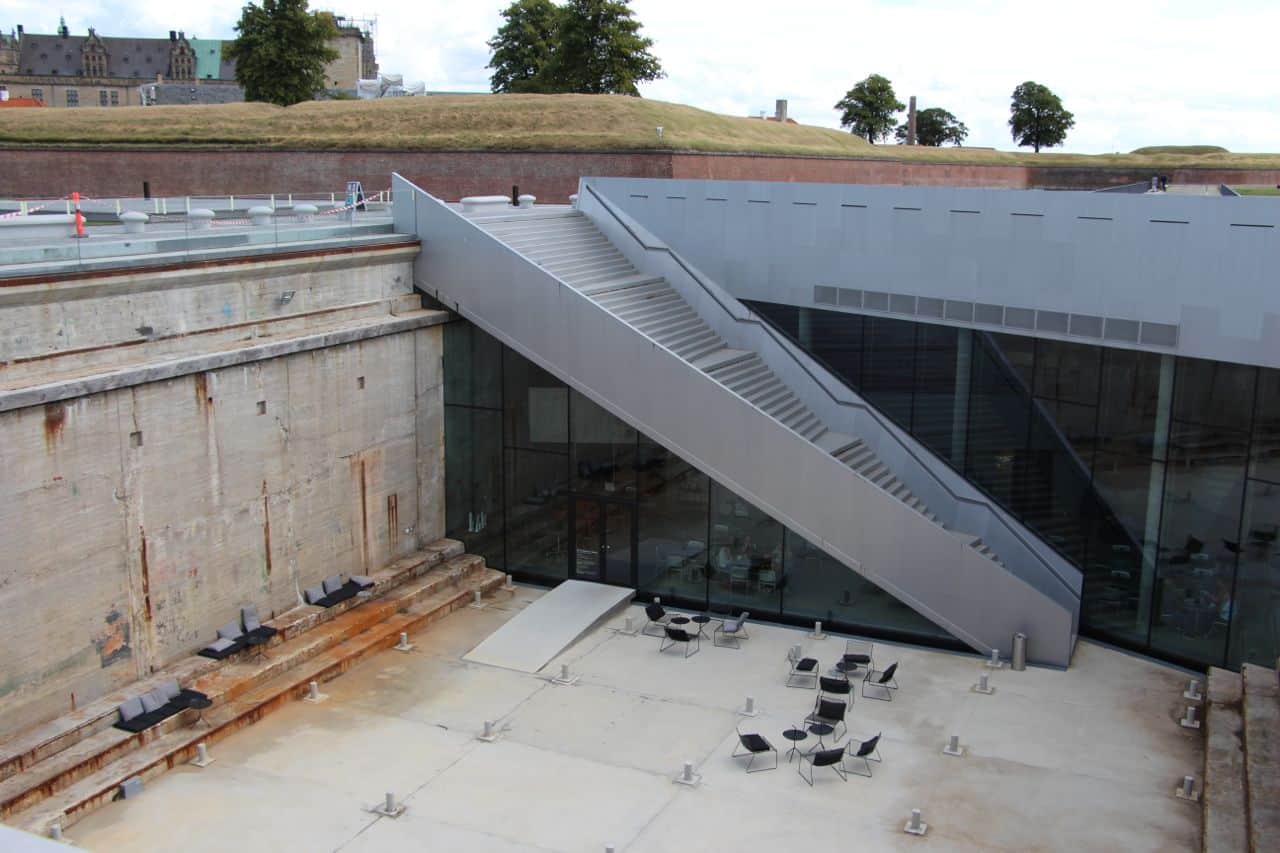
ABOUT ZEALAND
Zealand is the largest (7,031 km2) and most populated island in Denmark with a population of 2,267,659 (39% of Denmark total as of January 2016) and an area of 7,031 km².
It is the 96th-largest island in the world by area and the 35th most populous. It is connected to Funen by the Great Belt Bridge, to Lolland, Falster (and Germany from 2021) by the Storstrøm Bridge and the Farø Bridges. Zealand is also linked to Amager by five bridges. Zealand is linked indirectly, through intervening islands by a series of bridges and tunnels, to southern Sweden.
Copenhagen, the capital of Denmark, is located partly on the eastern shore of Zealand and partly on the island of Amager. Other cities on Zealand include Roskilde, Næstved and Elsinore. The island is not connected historically to the Pacific nation of New Zealand, which is named after the Dutch province of Zeeland.
GEOGRAPHY
Zealand is the most populous Danish island (pop. 2012 est. 2,491,090). It is irregularly shaped, and is north of the islands of Lolland, Falster, and Møn. The small island of Amager lies immediately east.
Copenhagen is mostly on Zealand but extends across northern Amager. A number of bridges and a metro rail connect Zealand to Amager, which is connected to Scania in Sweden by the Oresund bridge via the artificial island of Peberholm. Zealand is joined in the west to Funen, by the Great Belt bridge, and Funen is connected by bridges to the country's mainland, Jutland.
On June 5, 2007, the regional subsidiary of national broadcaster DR reported that Kobanke hill in the south east, near the town Rønnede in Faxe municipality, with a height of 122.9 m (403.21 feet), was the highest natural point on Zealand. Gyldenløveshøj, south of the city Roskilde, has a height of 126 m (413.4 feet), but that is due to a man-made hill from the 17th century and its highest natural point is only 121.3 m (397.96 feet).
THE CLIMATE OF ZEALAND
Zealand has a moderate maritime climate strongly influenced by the Baltic Sea and to a lesser degree by the North Sea. During the winter average daytime temperatures are just above freezing point. During the summer average daytime temperatures are around 20 degrees Celsius (68 degrees Fahrenheit). Precipitation is quite evenly spread out over the year; during the winter precipitation may fall in the form of sleet or snow.
CITIES IN ZELAND
Zealand is the largest of the Danish islands and is located between the island of Funen and Sweden. The island is connected with other Danish islands and the Swedish mainland by several bridges. Administratively the island is divided into two regions and a capital region. The largest city on the island is the capital Copenhagen. Other well known cities on the island include Roskilde, Frederiksberg and Helsingor. Near the city of Helsingor Kronoborg Castle is situated.
GETTING AROUND
As home to Copenhagen, Zealand is Denmark’s most visited region, and, with a swift metropolitan transport network covering almost half of the island, you can always make it back to the capital in time for an evening drink. North of Copenhagen, Helsingør (Elsinore) is the departure point for ferries to Sweden and the site of legendary Kronborg Castle. To the west, and on the main train route to Funen, is Roskilde, with an extravagant cathedral that served as the resting place for Danish monarchs, and a gorgeous location on the Roskilde fjord, from where five Viking boats were salvaged and are now displayed in a specially built museum. The northern coast of Zealand is scattered with quaint little fishing villages: consider a trip to Gilleleje, where you can buy fresh fish directly from the fishermen (connected by train to Helsingør).
Much of Zealand is easy to get around, and (bonus!) the Copenhagen Card allows free public transport and admission to many attractions.
EXPERIENCES AND ACTIVITIES IN ZEALAND
HORNBÆK BEACH

Hornbæk’s gorgeous Blue-Flag beach is the best on the north coast and the town’s main attraction. The sand is white and the air scented with salt and wild roses. The beach stretches out to either side of the harbour, and even though it borders the town, it’s pleasantly undeveloped, with all the commercial facilities on the other side of the dunes. The eastern side is where the kitesurfers and windsurfers hang out: you’ll need your own gear to join them.
From the train station it’s a five-minute walk – about 200m – directly north along Havnevej to the harbour. Climb the dunes to the left and you’re on the beach.
The Unesco World Heritage-listed Kronborg Slot began life as Krogen, a formidable tollhouse built by Danish king Erik of Pomerania in the 1420s. Expanded by Frederik II in 1585, the castle was ravaged by fire in 1629, leaving nothing but the outer walls. The tireless builder-king Christian IV rebuilt Kronborg, preserving the castle’s earlier Renaissance style and adding his own baroque touches. The galleried chapel was the only part of Kronborg that escaped the flames in 1629 and gives a good impression of the castle’s original appearance.
Kronborg fell upon more bad luck during the Danish-Swedish wars, with the Swedes occupying the castle from 1658 to 1660 and looting everything of value, including its famous fountain. Following the Swedish attack, Christian V bulked up Kronborg’s defences, but the Danish royals gave up trying to make the castle a home. The building became a barracks from 1785 until 1924, when it became a museum (the Swedish government sportingly returning some looted items). Although it costs to enter the interior, you can cross several swan-filled moats and walk into the dramatic courtyard free of charge, or make a circumnavigation of the castle’s mighty sea barriers (open daily until sunset) – a good picnic spot.
Royal Apartments
The Royal Apartments are rather empty today: the king’s and queen’s chambers, for example, have little in them but marble fireplaces, a few sticks of furniture, and some lavish ceiling paintings, although occasional modern-art exhibitions add an interesting dimension. The most impressive room is the ballroom, the longest in Scandinavia when it was built in 1585. Banquets held here consisted of 65 courses, and each guest was given their own vomiting bucket. Seven of the tapestries that originally adorned the walls – in excellent condition, and with interesting explanations alongside – can be seen in the adjoining Little Hall.
Casements
The chilly, low-ceilinged dungeon, which also served as storerooms and soldiers’ quarters, stretches underneath a surprisingly large area of the castle. It’s suitably dark and creepy, although you’ll make better sense of its empty rooms if you read up on barracks life before heading downwards. Delights include nesting bats, and a statue of the Viking chief Holger Danske (Ogier the Dane), who, legend says, will wake and come to Denmark’s aid in its hour of need.
The impressive Dutch Renaissance-styled Frederiksborg Slot spreads across three islets on the castle lake, Slotsø. The oldest part of the castle dates from the reign of Frederik II, after whom it is named. His son Christian IV was born here and most of the present structure was built by Christian in the early 17th century. With its gilded ceilings, tapestries and fine paintings, the castle's interior is magnificent. Especially dazzling is the Slotskirken (Coronation Chapel), which retains the original interior commissioned by Christian IV.
Spared serious damage in the fire that ravaged the castle in 1859, the chapel is a deliciously ornate confection of curling gold and pink-cheeked cherubs, kept fine company by a silver pulpit and altarpiece. A setting fit for royalty, Danish monarchs were crowned in the chapel from 1671 to 1840. You can hear the sound of the 17th century each Thursday between 1.30pm and 2pm, when the priceless Compenius organ (1610) is played, or at free concerts every Sunday at 5pm in July and August.
Also fairly intact is the Audience Chamber , an eye-boggling room containing trompe l’oeil details, a self-indulgent portrait of big-nosed Christian V posing as a Roman emperor, and best of all, a 17th-century elevator chair, which enabled the king to rise graciously through the floor!
Other rooms in the castle were restored to their original appearances in the 19th century. The richly embellished Riddershalen (Knights Hall), once the dining room, is particularly striking – check out the stucco friezes of deer, embedded with real antlers. Also impressive is the Great Hall, a vast ballroom complete with minstrels’ gallery, fine tapestries and vivid ceiling carvings.
The rest of the 1st and 2nd floors contain the Museum of National History, a chronologically arranged portrait gallery of kings, noblemen and olden-day celebrities, interspersed with unusual pieces of furniture. It’s a lot to digest in one go – you might be better off concentrating on the time periods that interest you. On the 3rd floor is the Moderne Samling (Modern Collection) , a collection of 20th- and 21st-century paintings and photography.
Both Frederik II and Christian IV used Frederiksborg as their royal seat, but after Hillerød suffered plague, fire and rampaging Swedes during the 17th century, the throne moved to quieter Fredensborg in the 18th century.
Slotshaven
The castle gardens lie to the north. The formal baroque garden (open from 10am till sunset), visible from the castle windows and made up of perfect terraces and immaculately manicured yew and box, demonstrates that even nature must bend to a king’s will. There’s also a Romantic garden, Indelukket, where 18th-century rigidity melts into a wilder 19th-century notion of gardening. North again is the oak wood of Lille Dyrehave, which was planted to provide material for boat-building after the Danish fleet was confiscated by England in 1807. You could easily spend a pleasant hour’s outing strolling through the three sections.
The Slotsø Ferry
From mid-May to mid-September, the little Frederiksborg ferry makes a 30-minute round-trip of the castle lake between 11am and 5pm Monday to Saturday, and between 1pm and 5pm on Sunday. It stops at three small piers: one on the edge of Torvet, one near the castle entrance and one by the baroque gardens.
Easily reached from Lejre train station on bus 233, this experimental archaeology centre is truly fascinating. Enthusiastic re-enactors use ancient technology to test out various theories: How many people does it take to build a dolmen? What plants might have been used to dye clothing? And how do you stop the goats eating your reed roof? Kids can let loose in the hands-on Fire Valley, paddling dug-out canoes, attempting to work a fire drill, and chopping up logs using primitive axes.
The landscape at Lejre is simply beautiful, with rolling hills and lake-filled hollows. A 3km-long path takes you past a Viking Age marketplace, prehistoric burial mounds, a dancing labyrinth and the Iron Age village ‘Lethra’, through fields of ancient crops, and down to a sacrificial pool and over precarious staked-wood bridges.
Denmark’s answer to Glastonbury, Roskilde Festival is northern Europe’s largest music festival. This four-day-long binge of bands and booze rocks Roskilde every summer on the last weekend in June.
The ruins of King Valdemar the Great's Vordingborg Slot have been given new life with the opening of the Danish Castle Centre, a high-tech museum exploring the castle's history, as well as that of
medieval Danish power, politics and castle life. Using interactive iPads, visitors can explore themes such as the tactics used by kings to gain and retain power, as well as learn about the museum's historical artefacts. Among these is an extraordinary piece of 15th-century chainmail armor, weighing almost 11 kilograms.
Outside, the iPad guide brings the ruins back to vivid life with digital reconstructions, while dedicated kids' features allow little ones to 'hunt ghosts' among the ruins. Scan your museum ticket to enter and ascend the Gåsetårnet (Goose Tower), the only surviving remnant of what was once a mighty fortress.
MUSEUMS
TRELLEBORG - MUSEUM OF THE VIKING AGE
History buffs will revel in visiting one of the most important Viking Age sites, a ring fortress dating back to AD 980. Before heading across the meadows to the fortress and reconstructed Viking-era buildings, visit the small but informative museum, which explains how the fort was built, occupied and abandoned. Displays contain weapons belonging to soldiers at the fort (spearheads, axes, arrowheads and shield bosses), as well as everyday items (pottery, bronze jewellery, locks and keys, combs and loom weights). There are also two skeletons from the graveyard.
The Fortress Trelleborg was constructed as a circular fortress, built to a precise mathematical plan and home to a garrison of around 500 soldiers, plus craftsmen and some women and children. Huge earthen banks, 17m wide and 6m high, formed a protective wall around the fort. Inside, two streets divided the circle into quarters, each containing four longhouses set around a courtyard. Two nearby streams gave the inhabitants boat access inland and out to the sea.
Trelleborg’s impressive scale and strategic position, and the similarly designed forts at Fyrkat, Nonnebakken and Aggersborg, indicate a powerful 10th-century force at work, with immense manpower to command. Dendrochronology has shown that the trees for the palisade (which added an extra defensive layer to the earth banks) were cut down in AD 980, during the reign of Harald Bluetooth. One theory is that the forts were built by Harald after an uprising led by his son, Svein Forkbeard.
Hints of big trouble are littered across Trelleborg. The fort was occupied for a very short space of time, before being abandoned around 990. There are signs of a large fire, and a Viking graveyard lying within the fort’s outer defences contains two mass graves, both containing the bodies of men in their 20s and 30s.
Despite the passing of a millennium since its construction, the circular earthen mound is perfectly intact. Naturally, the wooden structures that once stood inside it have long since decayed, but the post holes and gable ends of the buildings have been filled with cement to show the outlines of the house foundations. You can walk up onto the grassy circular rampart and readily grasp the strikingly precise geometric design of the fortress. Grazing sheep imbue the scene with a timeless aura.
Reconstructions
Several Viking-era buildings have been reconstructed at the site, using authentic materials and methods. The most impressive is the replica longhouse, built in 1941 in Viking stave style. Sit quietly on one of the sleeping benches that line the walls, watching the swallows dart through the doorways and the smoke hole, and you half expect one of the fortress’s former inhabitants to wander in.
Since it was built, archaeologists have changed their opinion on the external appearance of the longhouse. They now think that there was no outer gallery and that the roof was much lower – still, 10 out of 10 for effort.
A few reconstructed houses are clustered together to form ‘Trelletorp’, a tiny Viking village, with besmocked interpreters doing chores of the period such as sharpening axes, chopping wood and baking bread. From June to August there are often activities for children, such as archery demonstrations and pottery workshops.
Viking fans will be wowed by the superb Viking Ship Museum, which displays five Viking ships discovered at the bottom of Roskilde Fjord. The museum is made up of two main sections – the Viking Ship Hall, where the boats themselves are kept; and Museumsø, where archaeological work takes place. There are free 45-minute guided tours in English daily at noon and 3pm from late June to the end of August, and at noon on weekends from May to late June and in September.
Viking Ship Hall
Roskilde’s Viking-era inhabitants were expecting trouble in the mid-11th century. Five clinker-built ships, all made between 1030 and 1042, were deliberately scuttled in a narrow channel 20km north of Roskilde, presumably to block an attacking army. Once they had been holed and sunk, a mass of stones was piled on top to create an underwater barrier.
In 1962, a coffer dam was built around the barrier and sea water was pumped out. Within four months, archaeologists were able to remove the mound of stones and excavate the ships, whose wooden hulks were in thousands of pieces. These ship fragments were painstakingly reassembled onto skeleton frames in the purpose-built Viking Ship Hall. This brutal-looking minimalist construction becomes something magical inside, where the ghostly boats seem to float once more on the waters of the fjord.
The ships, known as Skuldelev 1, 2, 3, 5 and 6, show off the range of the Viking shipwrights: there’s an ocean-going trading vessel, a 30m warship for international raiding, a coastal trader, a 17m warship probably used around the Baltic, and a fishing boat. Carbon dating and dendrochronology have discovered further secrets, including their builders’ geographical scope – Skuldelev 1, for example, was made in Norway, whereas Skuldelev 2 came from Dublin.
Interesting displays about the Viking Age put the boats into a historical context, and the basement cinema runs a 14-minute film (in Danish, English, French, German, Italian and Spanish) about the 1962 excavation. There’s also a fascinating exhibition and film documenting the nail-biting 2007 voyage of the Havhingsten fra Glendalough from Roskilde to Dublin and back. Based on the 60-oared warship Skuldelev 2, it’s the largest Viking ship reconstruction to date (an incredible 340 trees went into its creation).
Museumsø
On Museum Island, adjacent to the Viking Ship Hall, craftspeople use Viking-era techniques and tools to build replicas of Viking ships. Ottar, Havhingsten fra Glendalough, Roar Ege, Helge Ask and Kraka Fyr (reconstructions of Skuldelev 1, 2, 3, 5 and 6 respectively) are moored in the harbour, where you can really appreciate their light, flexible designs.
In summer, a shipwright, blacksmith, tar-burner, weaver, rope-maker and fletcher demonstrate their crafts. Children can join in the fun by striking coins and painting their own shields.
Boat Trips
If you’ve always had an urge to leap aboard a longboat for a spot of light pillaging, join one of the museum’s hour-long boat trips. Traditional Nordic boats are propelled across the water by you and the rest of your shipmates.
From mid-May to the end of September, 50-minute trips run one to three times daily, with an additional two to three trips daily from late June to mid-August, weather dependent. Call ahead to confirm sailing times. Tickets (Dkr90) are additional to the main museum entry ticket.
Ingeniously built in and around a dry dock beside Kronborg Slot, Denmark's subterranean Maritime Museum merits a visit as much for its design as for its enlightened, multimedia galleries. The latter explore Denmark's maritime history and culture in dynamic, contemporary ways. Alongside the usual booty of nautical instruments, sea charts and wartime objects, exhibitions explore themes as varied as the representation of sailors in popular culture, trade and exploitation in Denmark's overseas colonies, and the globe-crossing journeys of modern shipping containers.
Interactive displays will have you inking a sailor's tattoo, testing your navigational skills, and even running your own trade company. The museum also houses a contemporary cafe and a fantastic gift shop where maritime-themed gifts mix it with Danish design and fashion pieces.




















